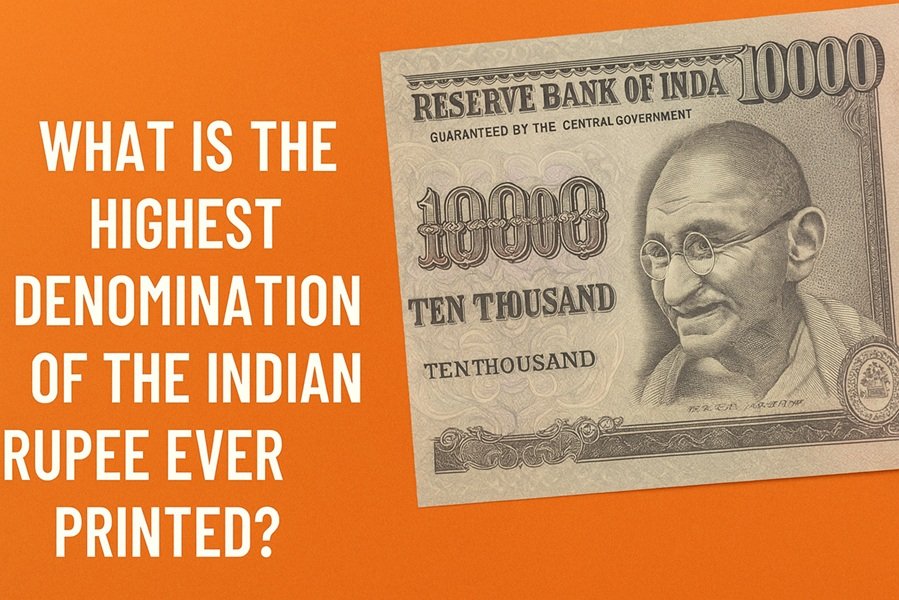
India, with its rich financial history and evolving currency system, has witnessed a variety of banknote denominations over the decades. Among these, one of the most intriguing questions that often arises is: What is the highest denomination of the Indian Rupee ever printed? The answer to this question not only provides insight into India’s monetary history but also offers a glimpse into the economic and political decisions taken during different eras.
In this article, we explore the highest denomination note ever printed in India, the circumstances under which it was introduced, its eventual fate, and its impact on the Indian economy.
A Historical Overview of Indian Currency
Before diving into the highest denomination, it’s essential to understand the evolution of Indian currency. The Indian Rupee has a history that dates back to ancient times, with early references found in the 6th century BCE. However, the modern Indian currency system began with the British colonial government, which introduced standardized coinage and later, paper money.
After independence in 1947, India gradually moved towards establishing a sovereign monetary system managed by the Reserve Bank of India (RBI). Over time, various denominations of banknotes were introduced to meet the needs of a growing and diversifying economy.
The Highest Denomination Ever Printed: ₹10,000
Yes, ₹10,000 (Ten Thousand Rupees) is the highest denomination of Indian currency ever printed by the Reserve Bank of India.
✅ Key Facts:
| Feature | Details |
|---|---|
| Denomination | ₹10,000 |
| First Introduced | 1938 |
| Reissued | 1954 |
| Withdrawn | 1946 (first issue), 1978 (final withdrawal) |
| Printed By | Reserve Bank of India (RBI) |
| Legal Tender Now? | No |
Timeline of the ₹10,000 Note
🏦 First Introduction: 1938
- The ₹10,000 note was first introduced in 1938 during the pre-independence era.
- Issued by the Reserve Bank of India, it was meant to facilitate large transactions in the financial system.
- The note bore the image of King George VI and was part of a high-denomination series alongside ₹1,000 and ₹5,000 notes.
💣 First Demonetization: 1946
- In January 1946, the government demonetized the ₹1,000, ₹5,000, and ₹10,000 notes in an attempt to combat black money and hoarding.
- This was the first major demonetization exercise in Indian history.
🇮🇳 Reissue in Independent India: 1954
- After independence, the ₹10,000 note was reintroduced in 1954, alongside ₹1,000 and ₹5,000 notes.
- These notes were used mainly for inter-bank transactions and high-value institutional use.
- The design was updated to reflect the sovereign identity of the Indian Republic, replacing colonial symbols.
🛑 Final Withdrawal: 1978
- In January 1978, the Indian government under Prime Minister Morarji Desai demonetized the ₹1,000, ₹5,000, and ₹10,000 notes.
- The reason cited was again the growing concern over unaccounted wealth and corruption.
- After 1978, these denominations were never reissued, making ₹10,000 the highest denomination ever printed and withdrawn from circulation in India.
Why Was the ₹10,000 Note Withdrawn?
The Indian government and RBI have always maintained a careful balance between facilitating ease of transactions and curbing illicit financial activity. The ₹10,000 note was mainly used by banks and large financial institutions, but:
- It aided hoarding and black money circulation.
- It was impractical for everyday use.
- It exacerbated financial inequality in a cash-dependent economy.
Thus, in 1978, the government decided to completely remove high-value currency to promote transparency and combat tax evasion.
What About the ₹2,000 Note?
Introduced in November 2016 post-demonetization of ₹500 and ₹1,000 notes, the ₹2,000 note is the highest denomination currently in circulation (as of 2023–24, although gradually being phased out).
| Note | Year Introduced | Status |
|---|---|---|
| ₹2,000 | 2016 | Being withdrawn from circulation since 2023 |
| ₹10,000 | 1938 (reissued 1954) | Withdrawn in 1978 |
However, even ₹2,000 is only one-fifth of the value of the ₹10,000 note from earlier times.
Interesting Facts About the ₹10,000 Note
- Rarity: The 1938 and 1954 series of ₹10,000 notes are now rare collectibles and are highly sought after by numismatists.
- Auction Value: These notes have been sold in auctions for lakhs of rupees depending on their condition and series.
- Security Features: Despite being old, these notes had advanced (for the time) watermarks and printing techniques.
Current Highest Denomination and Legal Tender
As of 2025, the highest denomination legally accepted as tender in India is the ₹500 note, with ₹2,000 notes being actively withdrawn by the RBI.
Could India Introduce a ₹10,000 Note Again?
Unlikely. Here’s why:
- The Indian economy is moving towards digital transactions.
- High-denomination notes often raise concerns about illegal hoarding.
- The government prefers promoting transparency and traceability, which smaller denominations and digital payments support.
Explore more Quiz.
Conclusion
The ₹10,000 note, once the highest denomination ever printed in India, now holds a unique place in the nation’s monetary history. Although no longer in circulation, it remains a testament to a different economic era—one with different priorities, challenges, and financial systems.
As India continues to modernize its economy and embrace digital currency, it’s unlikely that such high-value notes will return. Yet, the story of the ₹10,000 note is a compelling chapter in India’s journey from colonial rule to a digitized economy.







